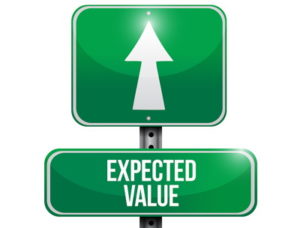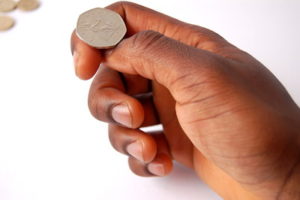 Throughout your poker gaming, every single decision that you make will influence the game and the outcome of your decision can be a variety of different things. Whether you are a brand new beginner on the poker tables or an elite professional, if you make better decisions and you get value from your decisions, you are going to be a better player.
Throughout your poker gaming, every single decision that you make will influence the game and the outcome of your decision can be a variety of different things. Whether you are a brand new beginner on the poker tables or an elite professional, if you make better decisions and you get value from your decisions, you are going to be a better player.
The decisions you make can be measured by expected value, giving you an idea of how good your decisions turn out to be. Get this right by analysing your choices and making the best decisions based on value, and over the long term, you should see an increase in your poker abilities, and as a better player, you should eventually make more money.
What is Expected Value?

Expected value is sometimes known by players as EV, so you may have also heard it referred to as this in the past. EV is based on your decisions with a poker hand and is the long term return of those decisions, even when small, short term variances are accounted for in the game. Expected value is not something limited to poker, it also applies to sports betting.
EV is not easy to work out and implement into your strategy, but it is a key element to use and is something that will help you make the right decisions. With EV, you are able to see the profitability of your decisions and put them against each other to see which way you should go.
To fully use EV at its best, you need to be able to separate the final outcome of the hand and your strategy into two different elements of the game.
The right strategy will lose on occasions, the key to it being right is that it gives you enough value to be able to make a profit over several hands. The wrong strategy will also win on occasions, and this is important to remember too because if you get a win with something new, that won’t necessarily mean that you have landed on a great, winning strategy.
An Example of EV with a Coin Toss
 To give an example of how EV works and what a good and bad EV strategy would be, let’s look at a coin toss.
To give an example of how EV works and what a good and bad EV strategy would be, let’s look at a coin toss.
We all know that the toss of a coin is completely 50/50, there are two options, and both are as likely as each other to happen. If you were to toss a coin thousand’s of times, the expected results would be split. Therefore, you would expect the payouts to be split, but if they aren’t then this is where EV would come into play.
To bet and finish level, a bet on a coin toss should be given at odds of 1/1. This means you bet 1 and receive 2 back if you win. You should win half of the time you play, so if you played 200 times, you would win 100 of those and receive 200 back, with 200 staked, so no profit and no loss.
If the odds are changed, then your bet should change based on those. Let’s say, for example, the odds on heads are 1/2 to give a payout of 1.5 instead of 2. If you play 200 times, your returns for winning half of the games are 150, meaning a loss of 50. You will win on occasions, but don’t let that make you think you have found a good EV strategy because over time, you will lose money if the game plays out as expected.
Here is the opposite of this. Let’s say that the odds on tails are raised to 2/1, so you get 3 back for the 1 bet you place. If you played 200 times, winning half of them as you should, the pay out would be 300, giving you a profit of 100 on the bets. This example is EV+, where the odds of what will happen, combined with the potential winnings from your bet means that over time, you will make a profit if results go as they should.
Why is EV Useful in Poker?
 Any poker player should have a number of tricks they can use in a bid to make their gaming profitable. You shouldn’t just look for a profitable course to take, but instead, you should always be aiming for the most profitable course to take. This should be a long term look too, not just something short term.
Any poker player should have a number of tricks they can use in a bid to make their gaming profitable. You shouldn’t just look for a profitable course to take, but instead, you should always be aiming for the most profitable course to take. This should be a long term look too, not just something short term.
Your overall poker profit changes, both positively and negatively, based on decisions that you make while you are playing on the table. The opponents you take on will have an impact on your profit, but that is not something you can control yourself. If you are on a table with great players, they may have so much more knowledge than you that you are going to lose. However, play against lesser players, and you can put yourself in a far better position, and win. Maximising those wins, while limiting the losses when you are on a tough table, is key to success.
How to Use Expected Value in Your Poker Play?
 When you are using expected value in poker, you are checking the value of a bet, and whether the pay out gives you something that is profitable. When you are sat at the poker table, you will be unable to calculate things, as it is quite complex.
When you are using expected value in poker, you are checking the value of a bet, and whether the pay out gives you something that is profitable. When you are sat at the poker table, you will be unable to calculate things, as it is quite complex.
However, there is nothing stopping you from looking at this beforehand, so you can build up your EV knowledge and have a basic understanding of this for when you are on the table.
The formula for working out expected value is as follow:
EV = [probability of winning*what you win] + [probability of losing*what you lose]
Working all of this out while you are sat at a poker table, even if you are sat at home and playing online, is an impossible task. The way this is used is to understand EV with poker, not as much to work out each individual hand while you are in the game.
What Can You Do at the Table?
 Although this is very complex, there is a way to do things at the table in a bid to help yourself make better decisions.
Although this is very complex, there is a way to do things at the table in a bid to help yourself make better decisions.
The most common way to do this is by doing two slightly different calculations, which are known as shortcuts when it comes to EV, and are used by many players. These are known as the rule of two and the rule of four. These will help you estimate your equity share in the pot, which in some situations is also your expected value.
It is important to note here that this works for no limit hold’em poker.
When you are at the flop stage of a game, you can estimate your pot equity with a draw by multiplying the number of outs you have by four. When you are on the turn, with one card still left to come, you can do it again, but this time you multiple by two.
While you may look at expected value and do a lot of work prior to playing, specifically in a game, this is what you will use while you are at the table.
Let’s look at an example where you are putting together a flush.
You hold two diamonds, and the flop puts two more on the table. This means you require one more, and you have nine possible outs as there are nine more diamonds in the pack.
At the flop, you would calculate 9*4 = 36% chance.
At the turn, you would calculate 9*2 = 18% chance.
Now, use this when you are looking at the pot, to see the value you are getting.
At the flop, you need pot odds of around 2/1, while at the turn you need pot odds of around 4/1.
If you have these, then you are likely to be in a position where your EV is positive, meaning the bets are good ones to place. Just like we highlighted at the top of this article, that doesn’t always mean you will win, as you will lose, even when you have the right strategy in place.
However, when you are betting in this way, and the winnings from the pot are greater than what is needed based on your chances of winning, over the long term, you should put yourself in a profitable position.
